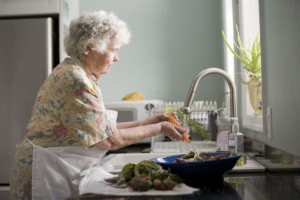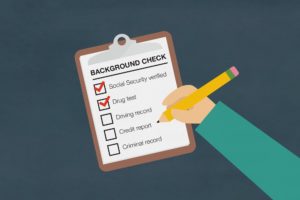
It’s no secret that family is important. In fact, it’s one of the building blocks of society.
Your family provides a sense of security and unconditional love. It’s also the foundation of who you are as a person.
But as much as you love your family, moving back to your parent’s home as an adult can be fraught with many difficulties. After all, families are still made up of individuals with differing personalities. This can make it very challenging for multiple generations to attempt to live under one roof.
This article takes a look at living in a multi-generational home. Keep reading to discover insight into how to cope with your family when it feels like you’re living on top of each other.
Financial Issues
Living with several generations in the same household can create friction in several ways, including arguments about finances. This is especially true if certain members of the family are currently unemployed or experiencing temporary financial difficulties.
It’s never desirable to suddenly find yourself having to carry more than your fair share of the load. Especially when it comes to paying bills, buying food, or covering other expenses for family members when they are either disabled, elderly, or simply unmotivated.
Ideally, this is a topic you should discuss as a family before agreeing to cohabitate. After all, very few subjects generate hostility faster than money.
And if you are moving in with members of your family specifically for the purpose of helping them out financially, just try to be patient with them and be prepared for a certain amount of tension to arise.
Privacy
Privacy is another major sticking point when multiple generations decide to move in together. After all, space becomes limited, thus most people will have far less privacy than they might have become accustomed to.
This is a topic that you likely take for granted until it’s suddenly thrust upon you. Most people don’t give privacy much thought until it’s taken away. But when you suddenly have little or no space to yourself, it can feel unsettling.
Everyone requires a different amount of privacy based on personality. After all, certain individuals will want lots of time to themselves, while others prefer to always be in close contact with loved ones. Privacy is especially important for couples and teenagers, thus it’s crucial to respect their privacy and give them plenty of time to themselves rather than expecting to have contact access to them.
Spacing bedrooms apart can help, but mostly it’s a matter of giving each other time alone even when everyone’s home at the same time.
Separate Entryways
Having separate entrances can help create a sense of separation and privacy when living together. This might seem a tad extreme and unnecessary, and yet it can actually make a big difference.
Rather than everyone entering through the same door and always being forced to interact with each other, separate entryways can provide the illusion of individual homes rather than sharing a living space.
Obviously not every home can offer separate entryways, but the more you can do to give each other space as you come and go from the house will help.
Entertainment Areas
Not everyone in your extended family will wish to hang out together and enjoy the same form of entertainment. This is especially true of individuals from different generations. In other words, the elders of the family will likely have different interests than the younger members of the family.
Thus it’s important to establish separate areas with televisions where everyone can watch what they want without treading upon others.
This can become a very sticky situation in a house with limited space, where you might only have room or money for a single TV. When this is the case, take the time to establish guidelines for entertainment so that everyone gets the chance to enjoy their favorite programs.
It’s also wise to invest in quality child safety locks.
Preparing Meals
Everyone has to eat. And yet the kitchen can become crowded, and the various generations living under the same roof might have conflicting meal demands.
This can require a bit of coordination and a lot of patience. The key is to learn to communicate, be willing to help each other and try to be as flexible as possible.
Preparing meals is actually a great chance to visit, catch up with each other’s lives, and reminisce about favorite memories together.
It’s important for everyone to contribute financially for food when possible, and to help prepare the meals or clean up afterward.
Dealing with Conflict
There will be conflicts when living under the same roof. This is a simple truth of life. Conflict is unavoidable, especially with multi-generational families.
Keep in mind that the potential for conflict becomes even higher when living in a small space, especially when you are used to having plenty of space to yourself and haven’t spent time around family in a few years.
One of the most important things to understand about conflict is, it’s totally natural and understandable. You’ll run low on patience, tempers will flare, and this will often lead to raised voices and hurt feelings.
The key is to try to resolve issues before the conflict grows into deep resentment that can cause long-term damage in relationships.
Learning to communicate and express feelings in a healthy way isn’t easy, but it’s essentially when trying to maintain a peaceful living environment.
Doing Laundry
When there are lots of people living under the same roof, there will naturally be lots of dirty clothes. This can be a problem when there’s only one washing machine. The best approach to avoiding conflict is to create a laundry schedule, with each person allotted a specific time to wash and dry their clothes.
Controlling the Thermostat
If your family is like most families, some people like to keep the house nice and warm while others prefer it cool inside. In these situations, it’s wise to invest in separate temperature controls throughout the house in an effort to keep everyone comfortable and happy.
This might not always be possible, yet this is a great way to prevent people from getting grumpy.
A Guide to Living in a Multi-Generational Home
Living with family can be a very gratifying experience, but it can also be stressful. Fortunately, these tips can help make your multi-generational home as pleasant as possible.
Keep scrolling to discover more useful senior-living tips and advice on our blog.









